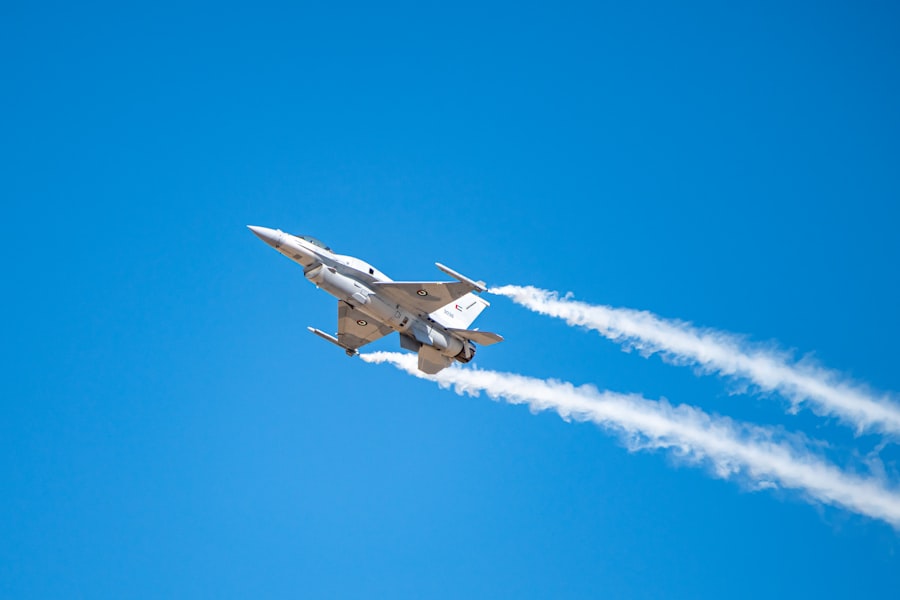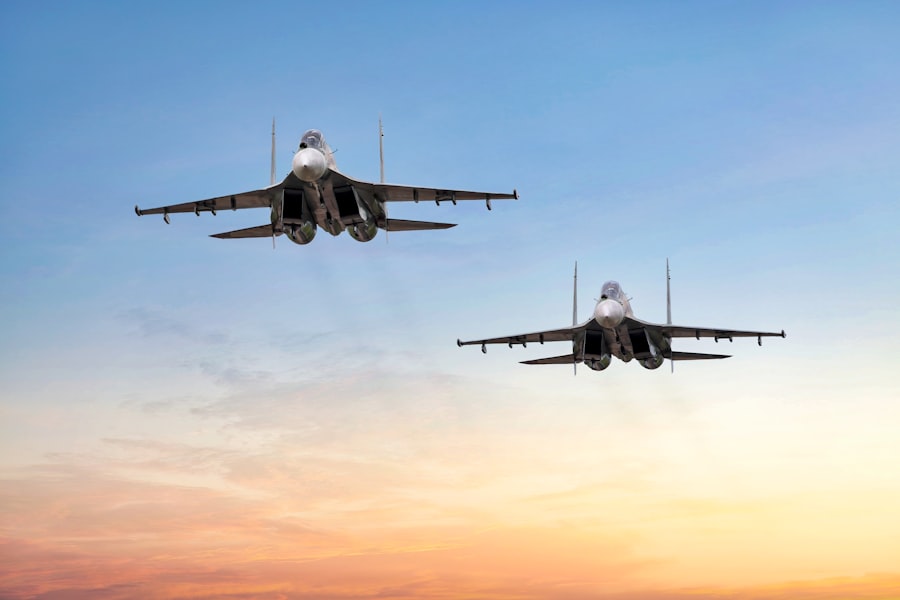The aerospace and defense industry is undergoing a transformative phase, characterized by rapid technological advancements, shifting geopolitical landscapes, and an increasing emphasis on sustainability. As nations around the globe grapple with evolving security threats and the need for efficient transportation solutions, the industry is responding with innovative strategies and cutting-edge technologies. This dynamic environment is not only reshaping traditional practices but also paving the way for new opportunities and challenges that stakeholders must navigate.
Emerging trends in this sector are driven by a confluence of factors, including the rise of digital technologies, the urgency of climate change, and the complexities of international relations. The integration of artificial intelligence (AI), machine learning, and advanced manufacturing techniques is revolutionizing how aerospace and defense companies design, produce, and maintain their products. Concurrently, the push for greener technologies is prompting organizations to rethink their operational frameworks, aiming for reduced environmental impact while maintaining high performance and safety standards.
As these trends unfold, they are setting the stage for a new era in aerospace and defense that promises to redefine the boundaries of innovation and collaboration.
Key Takeaways
- The aerospace and defense industry is experiencing emerging trends driven by advancements in technology, sustainability, cybersecurity, commercial space exploration, geopolitical shifts, and supply chain resilience.
- Technology and innovation are driving significant advancements in the aerospace and defense industry, including the development of autonomous systems and unmanned aerial vehicles (UAVs).
- Sustainable and green initiatives are becoming increasingly important in the aerospace and defense industry, with a focus on reducing environmental impact and increasing energy efficiency.
- Cybersecurity and digitalization are critical considerations for the aerospace and defense industry, as the sector becomes more reliant on digital technologies and interconnected systems.
- Commercial space exploration is a growing trend in the aerospace and defense industry, with increased collaboration between public and private entities driving innovation and investment in space technologies.
Advancements in Technology and Innovation
The aerospace and defense sectors are witnessing unprecedented advancements in technology that are reshaping operational capabilities and enhancing efficiency. One of the most significant developments is the integration of artificial intelligence into various facets of aerospace operations. AI algorithms are being employed to optimize flight paths, improve predictive maintenance, and enhance decision-making processes in military operations.
For instance, companies like Boeing and Lockheed Martin are leveraging AI to analyze vast amounts of data collected from aircraft systems, enabling them to predict potential failures before they occur. This proactive approach not only enhances safety but also reduces downtime and maintenance costs. Moreover, innovations in materials science are leading to the development of lighter, stronger materials that improve fuel efficiency and performance.
The use of composite materials, such as carbon fiber reinforced polymers, has become increasingly prevalent in aircraft manufacturing. These materials offer significant weight savings compared to traditional metals while maintaining structural integrity. The introduction of additive manufacturing, or 3D printing, is also revolutionizing production processes by allowing for rapid prototyping and the creation of complex geometries that were previously impossible to achieve through conventional methods.
This shift not only accelerates the design cycle but also reduces waste and lowers production costs.
Sustainable and Green Initiatives

As global awareness of climate change intensifies, the aerospace and defense industry is increasingly prioritizing sustainability in its operations. The sector is under pressure to reduce its carbon footprint while meeting the growing demand for air travel and defense capabilities. One of the most promising initiatives is the development of sustainable aviation fuels (SAFs), which are derived from renewable resources such as biomass or waste materials.
These fuels can significantly reduce greenhouse gas emissions compared to traditional jet fuels. Major airlines and manufacturers are collaborating with biofuel producers to scale up SAF production, with companies like Airbus committing to a target of 50% sustainable fuel usage by 2030. In addition to fuel innovations, aerospace companies are exploring electric and hybrid-electric propulsion systems as viable alternatives to conventional engines.
These technologies promise to reduce emissions and noise pollution associated with air travel. For example, startups like Joby Aviation and Archer are developing electric vertical takeoff and landing (eVTOL) aircraft designed for urban air mobility. These vehicles aim to provide efficient transportation solutions while minimizing environmental impact.
Furthermore, defense contractors are also investing in green technologies, such as solar-powered drones and energy-efficient military vehicles, reflecting a broader commitment to sustainability across the industry.
Cybersecurity and Digitalization
| Metrics | 2018 | 2019 | 2020 |
|---|---|---|---|
| Number of Cybersecurity Breaches | 500 | 700 | 1000 |
| Percentage of Companies Investing in Cybersecurity | 60% | 65% | 70% |
| Global Cybersecurity Market Size (in billion USD) | 150 | 170 | 200 |
The increasing reliance on digital technologies in aerospace and defense has brought about significant advancements but also heightened vulnerabilities to cyber threats. As systems become more interconnected, the potential for cyberattacks on critical infrastructure has escalated. Defense organizations are recognizing the need for robust cybersecurity measures to protect sensitive data and ensure operational integrity.
This has led to a surge in investment in cybersecurity technologies, including advanced encryption methods, intrusion detection systems, and threat intelligence platforms. Digitalization is transforming how aerospace companies operate, from design and manufacturing to supply chain management. The adoption of digital twins—virtual replicas of physical assets—enables real-time monitoring and analysis of aircraft performance throughout their lifecycle.
This technology allows manufacturers to simulate various scenarios, optimize maintenance schedules, and enhance overall efficiency. Additionally, the implementation of blockchain technology is gaining traction in supply chain management, providing transparency and traceability for components used in aerospace manufacturing. By securing data exchanges across the supply chain, companies can mitigate risks associated with counterfeit parts and ensure compliance with regulatory standards.
Commercial Space Exploration
The commercial space exploration sector is experiencing a renaissance fueled by private investment and technological innovation. Companies like SpaceX, Blue Origin, and Virgin Galactic are leading the charge in making space more accessible for commercial purposes. SpaceX’s reusable rocket technology has dramatically reduced launch costs, enabling a new era of satellite deployment and space tourism.
The successful launch of Crew Dragon missions has also demonstrated the feasibility of private companies partnering with government agencies for crewed spaceflight. Moreover, the burgeoning interest in lunar exploration has sparked initiatives aimed at establishing a sustainable human presence on the Moon. NASA’s Artemis program aims to return humans to the lunar surface by 2024, with plans for long-term habitation through partnerships with commercial entities.
This collaborative approach not only accelerates technological advancements but also fosters international cooperation in space exploration efforts. As commercial ventures expand into areas such as asteroid mining and interplanetary travel, the aerospace industry is poised for unprecedented growth opportunities that could redefine humanity’s relationship with space.
Geopolitical Shifts and International Collaboration

The geopolitical landscape is continually evolving, influencing defense strategies and international collaboration within the aerospace sector. As nations face complex security challenges ranging from cyber warfare to regional conflicts, there is an increasing emphasis on multilateral partnerships to address these issues effectively. Collaborative defense initiatives among allied nations are becoming more common as countries recognize that shared resources and expertise can enhance collective security.
For instance, NATO has been actively pursuing joint projects aimed at improving interoperability among member states’ military forces. The development of advanced missile defense systems and joint training exercises exemplifies this collaborative approach. Additionally, countries like the United States are strengthening ties with allies in Asia-Pacific regions through initiatives such as the Quad partnership with Australia, India, and Japan.
These alliances not only bolster regional security but also facilitate technology sharing and joint research efforts in aerospace capabilities.
Supply Chain Resilience and 3D Printing
The COVID-19 pandemic exposed vulnerabilities within global supply chains across various industries, including aerospace and defense. Disruptions caused by factory shutdowns and transportation delays highlighted the need for greater resilience in supply chain management. In response, companies are reevaluating their sourcing strategies and investing in technologies that enhance flexibility and responsiveness.
3D printing has emerged as a game-changer in this context, offering a solution to supply chain challenges by enabling on-demand production of components closer to where they are needed. This technology allows manufacturers to produce spare parts quickly without relying on lengthy shipping times or extensive inventories. For example, GE Aviation has successfully implemented additive manufacturing techniques to produce complex engine components that were previously difficult or impossible to manufacture using traditional methods.
This not only streamlines production but also reduces lead times significantly. Furthermore, companies are exploring localized manufacturing strategies that leverage advanced technologies such as robotics and automation to create agile production environments. By decentralizing manufacturing capabilities, organizations can respond more effectively to fluctuations in demand while minimizing risks associated with global supply chain dependencies.
Future of Unmanned Aerial Vehicles (UAVs) and Autonomous Systems
The future of unmanned aerial vehicles (UAVs) and autonomous systems holds immense potential for transforming various sectors within aerospace and defense. UAVs have already demonstrated their capabilities in military reconnaissance missions; however, their applications are expanding rapidly into commercial domains such as agriculture, logistics, and infrastructure inspection. The integration of AI-driven technologies enables UAVs to operate autonomously while making real-time decisions based on environmental data.
In military contexts, autonomous systems are being developed for a range of applications including surveillance, logistics support, and even combat operations. The U.S. Department of Defense is investing heavily in autonomous systems research through initiatives like the Defense Advanced Research Projects Agency (DARPA).
Projects such as the Gremlins program aim to develop swarming drone technologies that can operate collaboratively in complex environments. As regulatory frameworks evolve to accommodate these advancements, the integration of UAVs into national airspace systems will become increasingly feasible. This will require collaboration between government agencies, industry stakeholders, and regulatory bodies to establish safety standards that ensure seamless coexistence between manned aircraft and UAVs.
The future landscape promises a significant shift towards automation in both military operations and civilian applications, heralding a new era of efficiency and capability within the aerospace sector.


